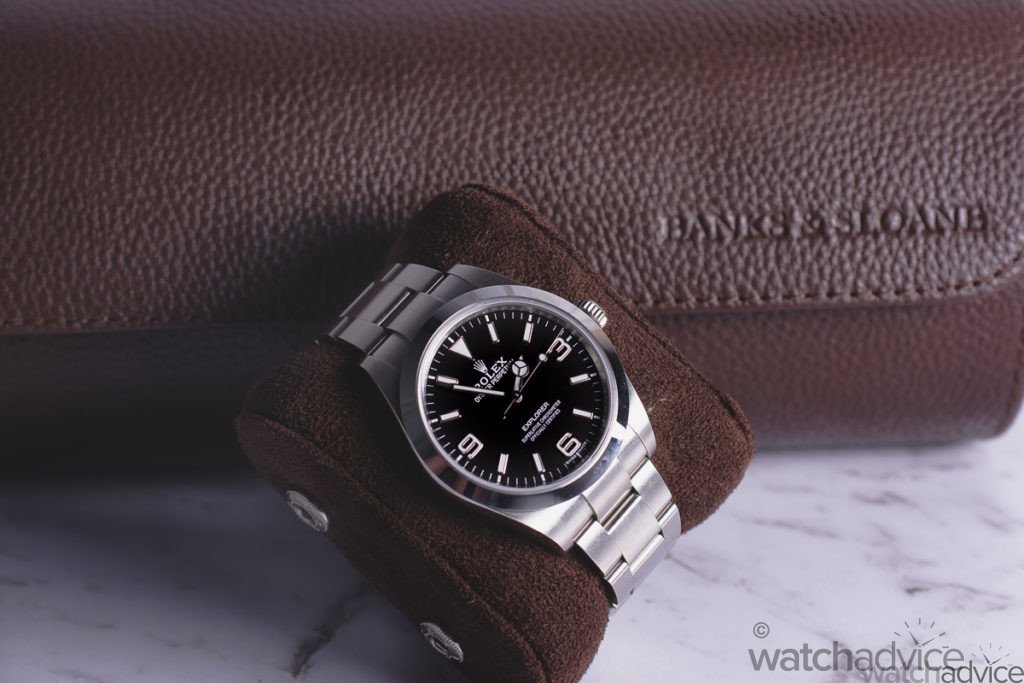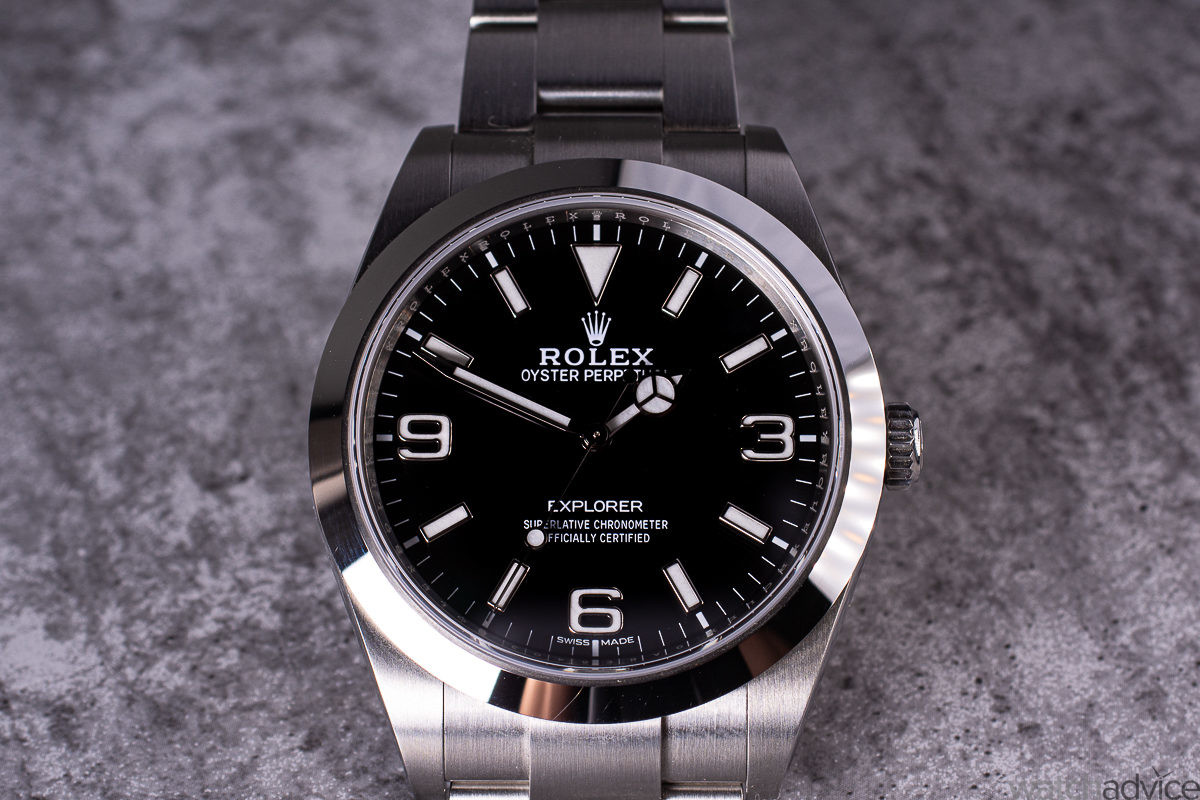Rolex is a brand filled with iconic model lines, from the famed Submariner to the beguiling Daytona. The brand has managed to churn out generations of their core models with only the slightest misstep here and there.
One of the most recent miscalculations came out of the Explorer range. A line famous for scaling Mount Everest strapped to the wrist of the courageous Sir Edmond Hillary, braving some of the harshest conditions found on Planet Earth, the Explorer proving to be a reliable companion for such a daring endeavour. So, when it came time for Rolex to modernise the piece, and growing to its current 39mm design, it was somewhat bewildering that the Swiss giant forgot to also scale up the hands of the watch.
Fear not however, never one to sit on a mistake for long, Rolex released the mark 2 spec of the newer, larger Explorer, this is the watch featured in this hands-on review.
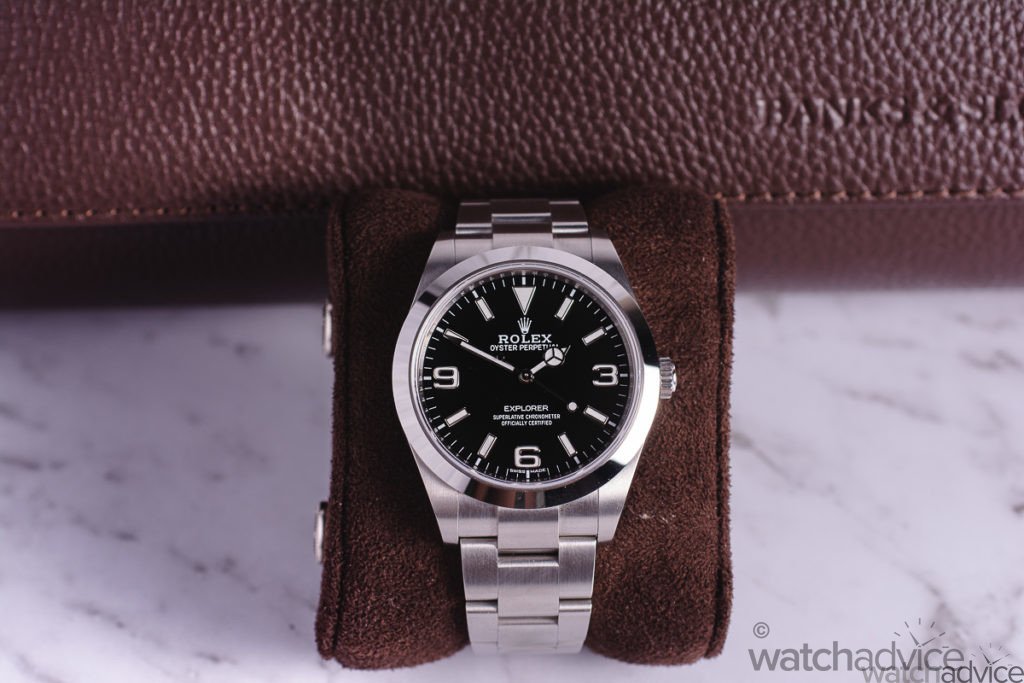
Few dials are as iconic and recognisable as the legendary Explorer 3, 6, 9 configuration. The watch being balanced, and imperfectly asymmetrical all at once, never have I looked down at the dial of the Explorer reference 214270 and thought it looked anything but ideal.
At 39mm the increase in case diameter has given the dial room to breathe, the prominent Arabic numerals so synonymous with the Explorer are allowed to stand proud, not interfered with or cramped as they may feel on a lesser case size. There is a brilliance to how the dial is proportioned here, the blackness of the dial creates a necessary void for your eye to span across when taking in the elements placed around it.
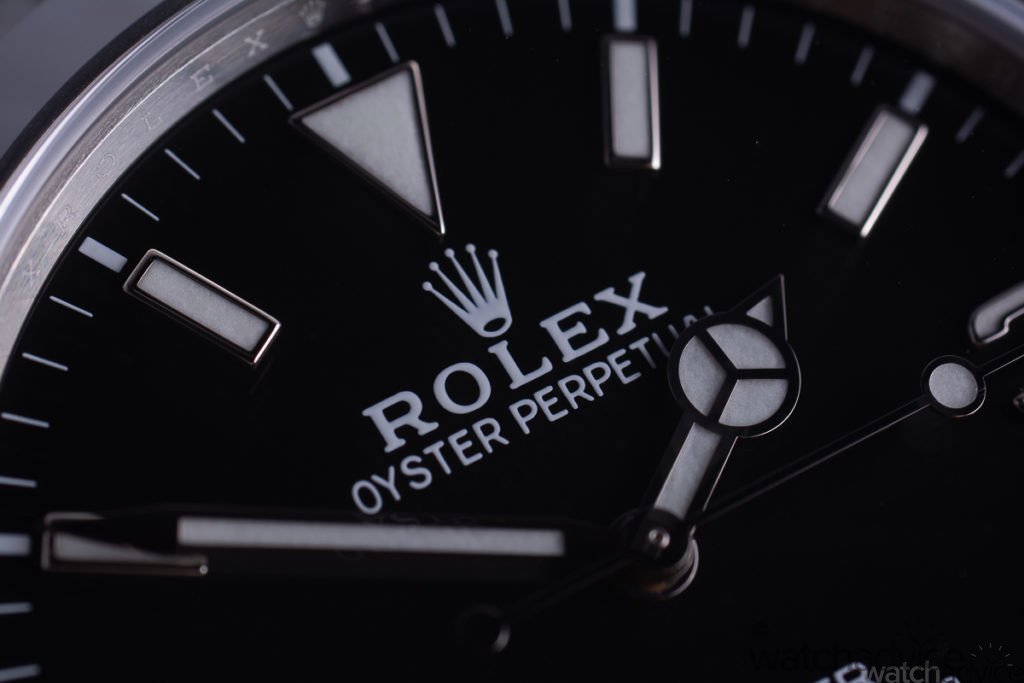
The printing of balanced three lines of text, each at 12 and 6, is clean and executed with precision, the coronet of Rolex sits above all else as it should be. The dial is a place where the manufacturing turns towards a skilled hand, not a well programmed machine, a feature seldom seen on a serial piece for the brand.
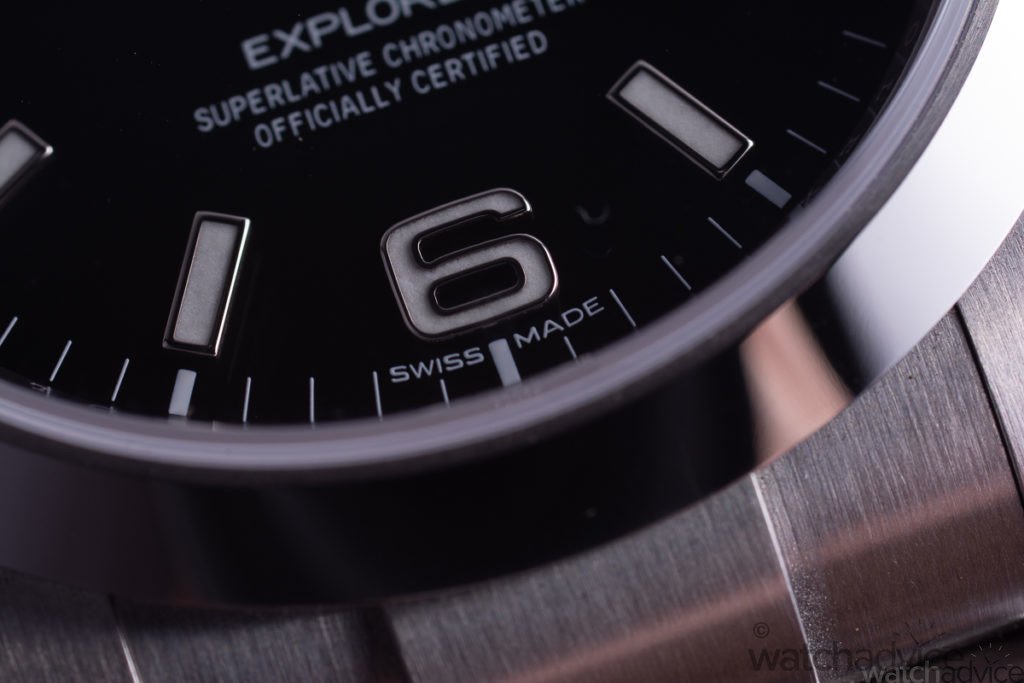
All hour markers and numerals are filled with Rolex’s proprietary luminous material, Chromalight, for a signature and long lasting blue luminance.
Much has been made over recent years as to whether or not Rolex’s quality control and finishing quality stands up to both its price point, and its demand within the marketplace. From my experience with the Explorer, I must remark that the finishing of the dial and especially the hands is superb. Even under very intense macro photography, the hands, lume and print all meet expectations of what is a $10,000 wristwatch.
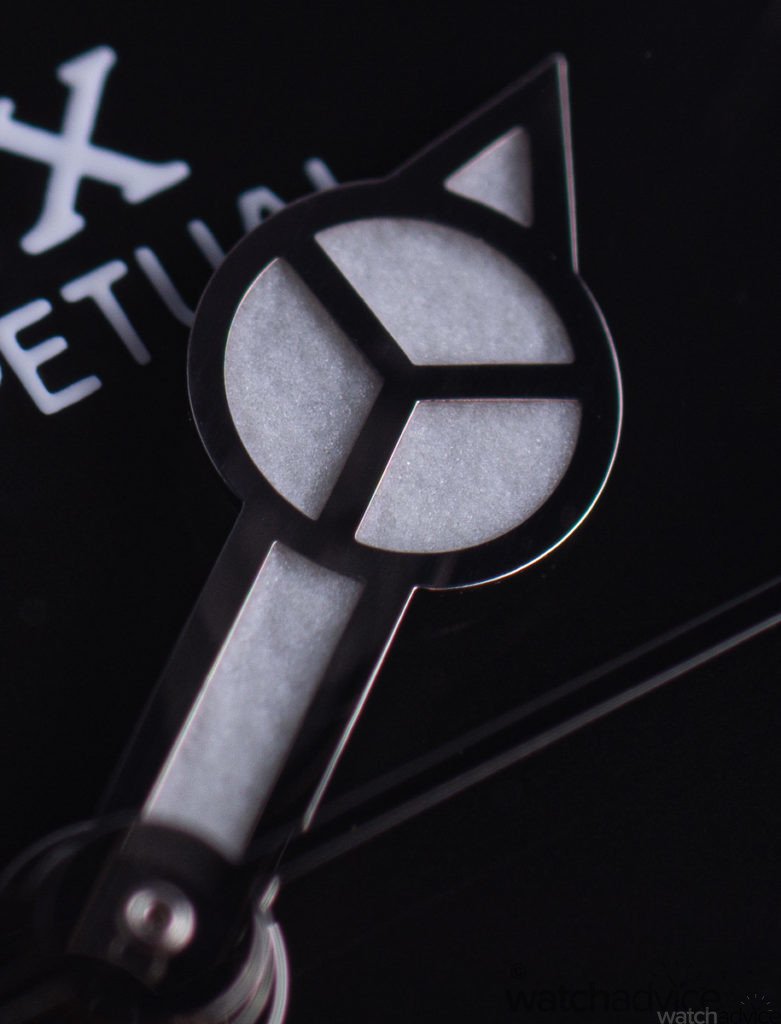
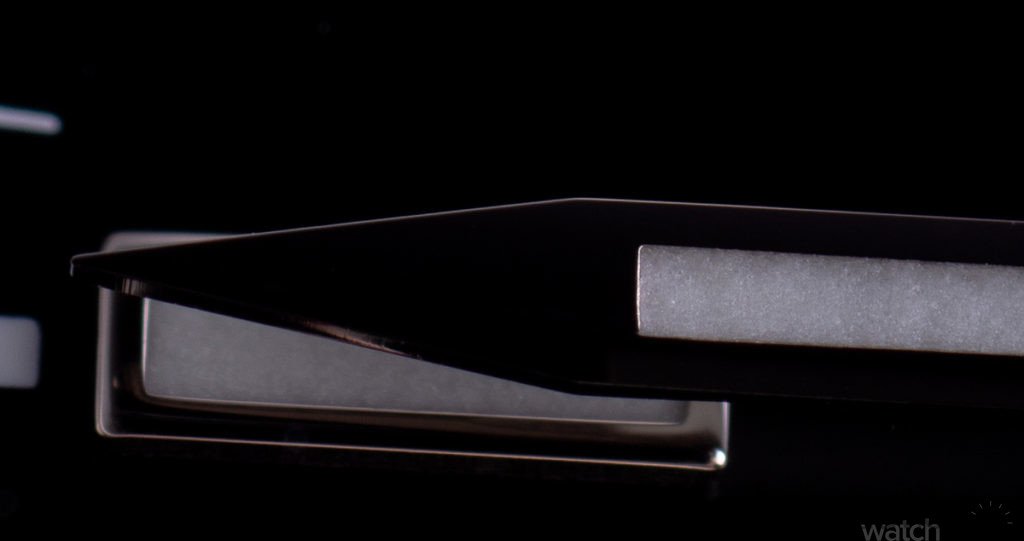
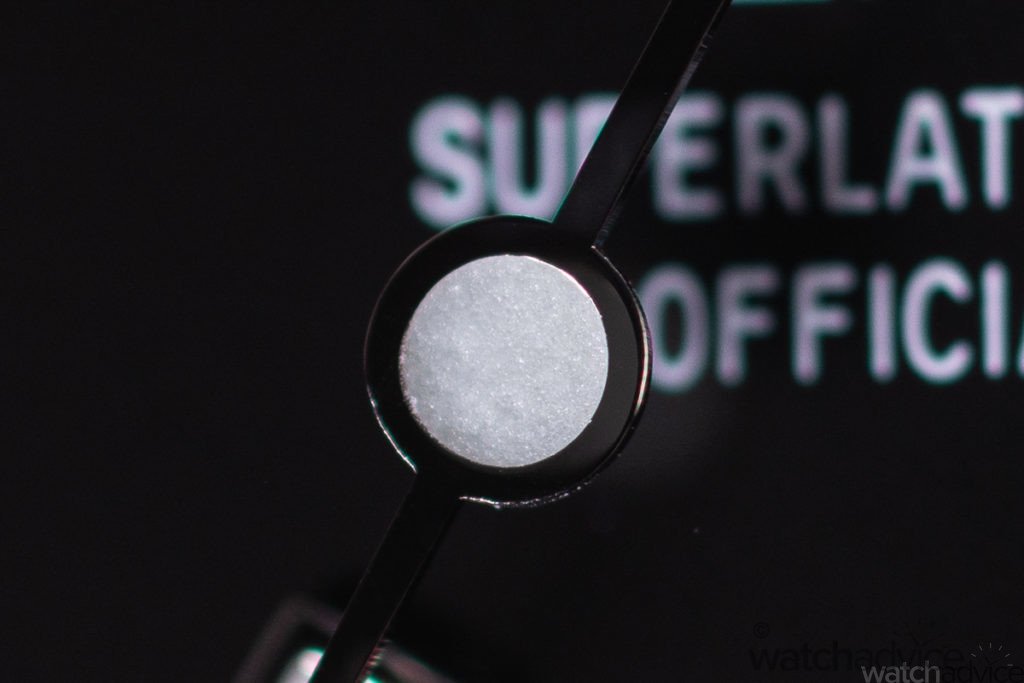
The case and bracelet of the Explorer are constructed from Rolex’s signature 904L steel, a material specially designed by the brand and coined Oystersteel. Rolex’s Oystersteel is extremely resistant to corrosion and offers an exceptional finish once polished, although it is more susceptible to scratching and scuffing.
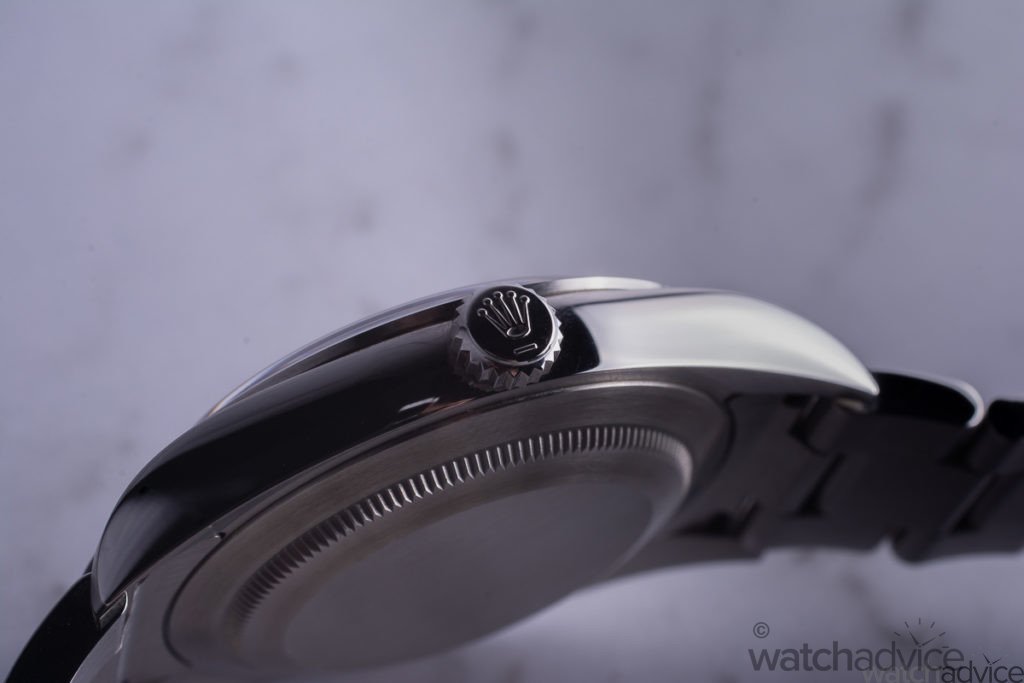
The biggest positive to 904L steel is also its biggest detractor, your watch will polish and refinish much easier and more effectively, but scratches and marks will start to appear almost instantly. For some consumers a scratch is a heart shattering event, especially on a watch in this price point, however personally I am of the belief that a watch should be worn and worn well, a few marks here and there are part of your journey with the watch and should be embraced. Although it is nice to know that the Explorer can be restored to a showroom sheen if the need arises.
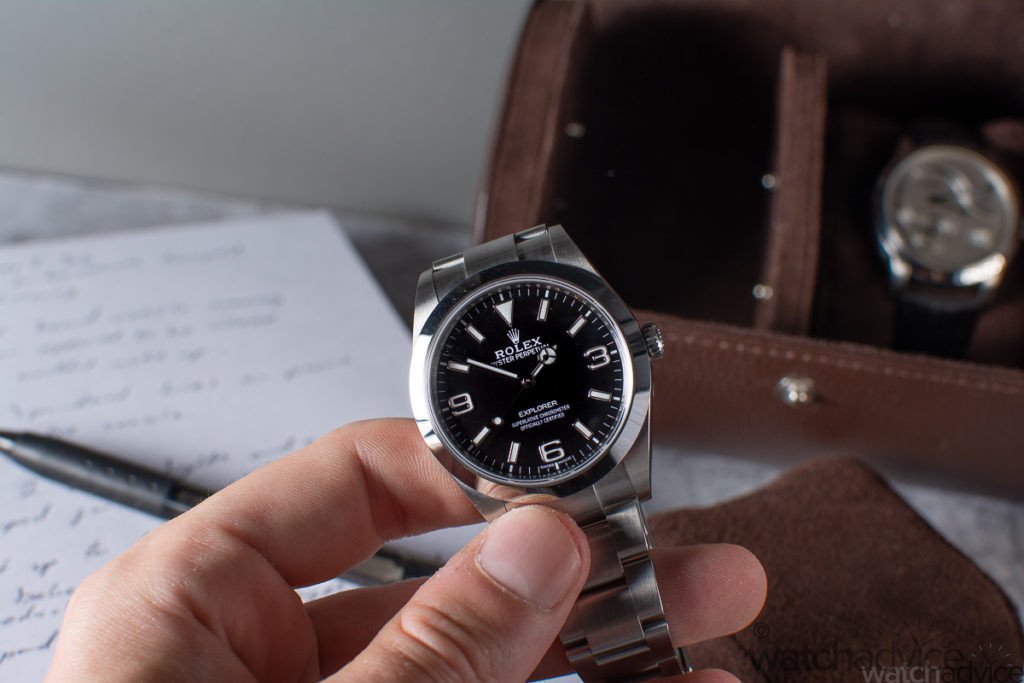
When it comes to the bracelet of the Explorer 214270, we find a traditional Oyster bracelet, the three link combination the brand made famous when it introduced the design in 1947. An oyster bracelet is a perfect marriage of form and function, the design maintains its robust aesthetic without any compromise in comfort. Rolex have perfected the execution of a three link bracelet like almost no other brands could ever hope for.
With the Rolex Explorer being part of the brands ‘sports’ line, it is given a significant clasp upgrade over other Oyster Perpetual models. The watch is equipped with the Oysterlock folding clasp, complete with an easy link adjustment system, offering around 5mm of extra length on the fly.
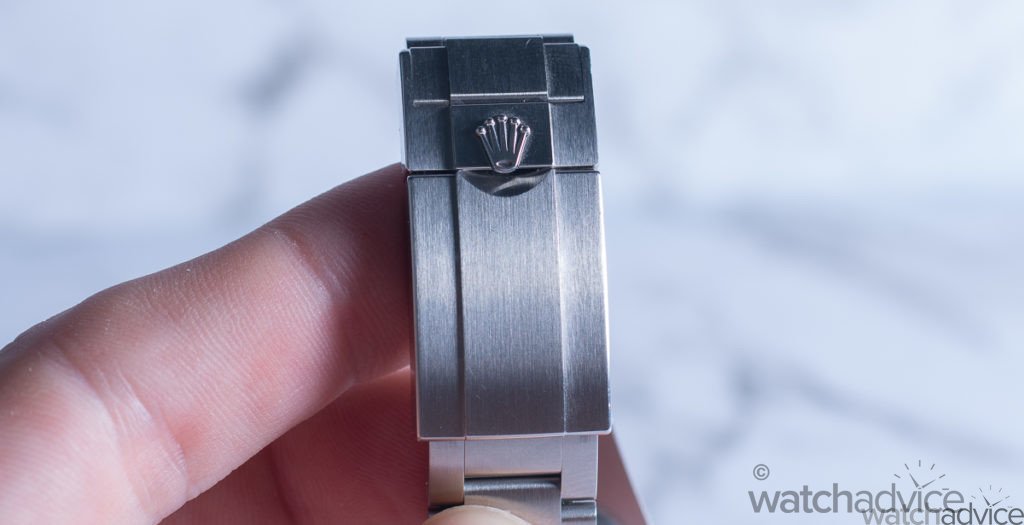
The clasp is another high point of the Explorer, the fold over is fitted with extreme precision and the locking mechanisms for both it, and the clasp as a whole are satisfying and secure. The addition of the easy link adjustment comes into use much more than I had initially anticipated. There have been many occasions where I have needed to pop out the extra 5mm throughout a hot day, or simply due to working a desk typing with a flexed wrist. Short of the Submariner and Deepsea glide lock systems, the easy link is the best adjustment method the brand offers.
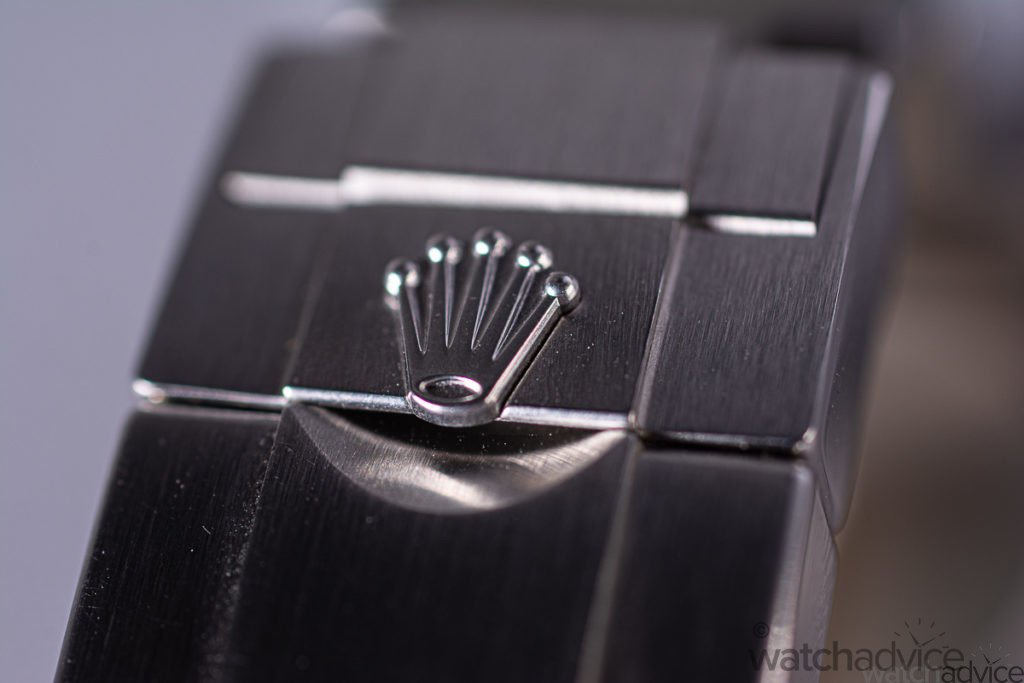
Inside the Rolex Explorer reference 214270 is the Rolex calibre 3132 automatic movement. A self-winding mechanical movement entirely developed and manufactured by Rolex. It features a Parachrom hairspring and Paraflex shock absorbers, offering greater resistance to shocks and to extreme conditions. Like all Rolex Perpetual movements, the 3132 is a certified Swiss chronometer, a designation reserved for high-precision watches that have successfully passed the Swiss Official Chronometer Testing Institute (COSC) tests. Its architecture, in common with all Oyster watch movements, makes it singularly reliable.
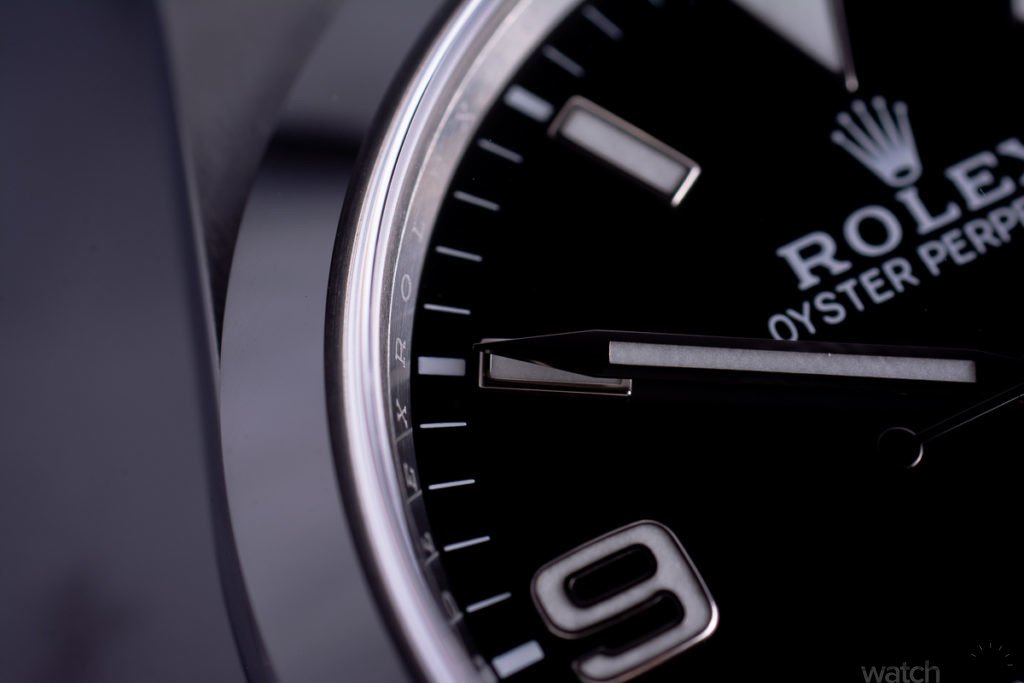
In 2020, the calibre 3132 is starting to show its age a little, offering only around 48 hours of power reserve. It is not hard to see Rolex updating the movement in the near future, bringing the power reserve in line with what is quickly becoming an industry standard 70 hours.
When reviewing the Explorer it was important for me to put aside any controversy surrounding the availability of modern Rolex sports models. In reviewing the watch I am not in anyway reviewing the brand, or the marketplace as it pertains to the brand. One controversy surrounding the watch I do want to tackle however, is the increase in case size from the traditional 36mm, up to the now 39mm we have been presented by Rolex.
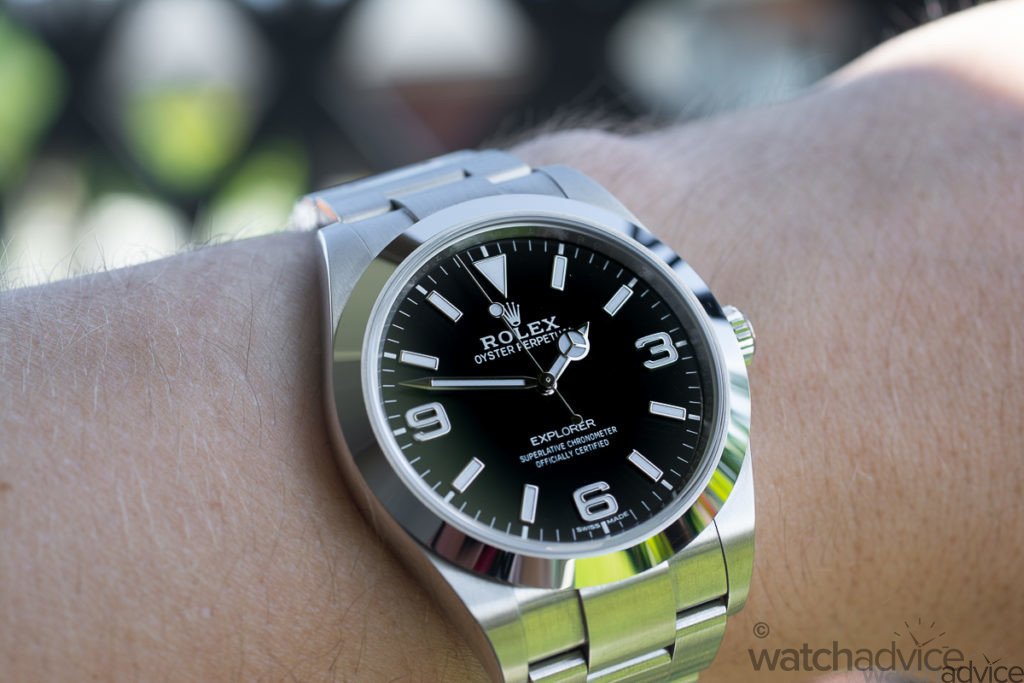
I have spoken about how I feel the increase in size actually greatly improves the dial of the Explorer. What I also find with the 39mm case size is that it sits excellently on the wrist. The watch sits flat and low, hugging to the wrist and with the help of the slight curvature of the lugs and end links, the watch flows effortlessly into its bracelet. On my 17cm wrist I have no problem at all wearing this watch, and could easily see the piece fitting on a wrist as small as 15cm.
The Rolex Explorer is a watch that was designed to be an everyday companion, a watch that could explore the world with its wearer. Whilst it is undeniable that Rolex has veered far from that original cause, the Explorer is one of the last vestiges of that heritage. It is a watch that can climb a mountain with you, then sit proudly on your wrist at countless dinner parties and formal events whilst you regale a crowd with your tales of adventure, exploration and discovery.
